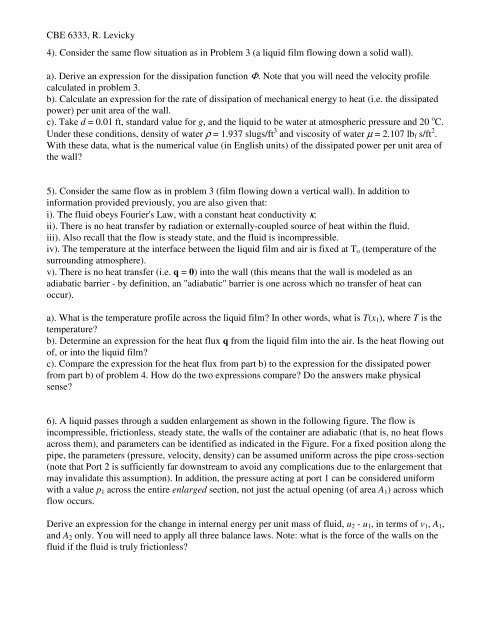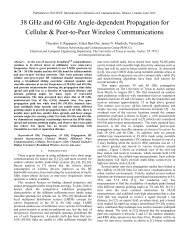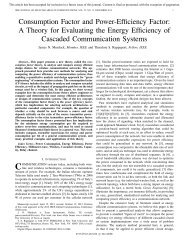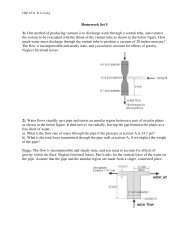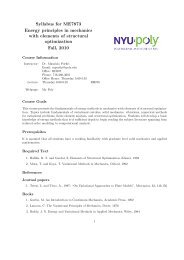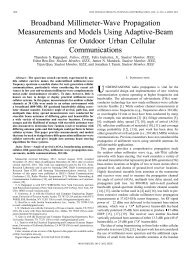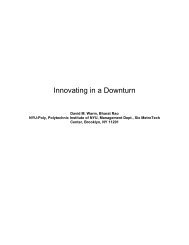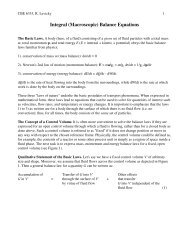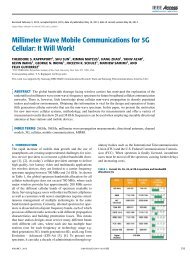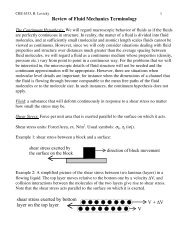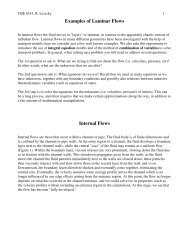Homework Set 3
Homework Set 3
Homework Set 3
- No tags were found...
You also want an ePaper? Increase the reach of your titles
YUMPU automatically turns print PDFs into web optimized ePapers that Google loves.
CBE 6333, R. Levicky4). Consider the same flow situation as in Problem 3 (a liquid film flowing down a solid wall).a). Derive an expression for the dissipation function Φ. Note that you will need the velocity profilecalculated in problem 3.b). Calculate an expression for the rate of dissipation of mechanical energy to heat (i.e. the dissipatedpower) per unit area of the wall.c). Take d = 0.01 ft, standard value for g, and the liquid to be water at atmospheric pressure and 20 o C.Under these conditions, density of water ρ = 1.937 slugs/ft 3 and viscosity of water µ = 2.107 lb f s/ft 2 .With these data, what is the numerical value (in English units) of the dissipated power per unit area ofthe wall?5). Consider the same flow as in problem 3 (film flowing down a vertical wall). In addition toinformation provided previously, you are also given that:i). The fluid obeys Fourier's Law, with a constant heat conductivity κ.ii). There is no heat transfer by radiation or externally-coupled source of heat within the fluid.iii). Also recall that the flow is steady state, and the fluid is incompressible.iv). The temperature at the interface between the liquid film and air is fixed at T o (temperature of thesurrounding atmosphere).v). There is no heat transfer (i.e. q = 0) into the wall (this means that the wall is modeled as anadiabatic barrier - by definition, an "adiabatic" barrier is one across which no transfer of heat canoccur).a). What is the temperature profile across the liquid film? In other words, what is T(x 1 ), where T is thetemperature?b). Determine an expression for the heat flux q from the liquid film into the air. Is the heat flowing outof, or into the liquid film?c). Compare the expression for the heat flux from part b) to the expression for the dissipated powerfrom part b) of problem 4. How do the two expressions compare? Do the answers make physicalsense?6). A liquid passes through a sudden enlargement as shown in the following figure. The flow isincompressible, frictionless, steady state, the walls of the container are adiabatic (that is, no heat flowsacross them), and parameters can be identified as indicated in the Figure. For a fixed position along thepipe, the parameters (pressure, velocity, density) can be assumed uniform across the pipe cross-section(note that Port 2 is sufficiently far downstream to avoid any complications due to the enlargement thatmay invalidate this assumption). In addition, the pressure acting at port 1 can be considered uniformwith a value p 1 across the entire enlarged section, not just the actual opening (of area A 1 ) across whichflow occurs.Derive an expression for the change in internal energy per unit mass of fluid, u 2 - u 1 , in terms of v 1 , A 1 ,and A 2 only. You will need to apply all three balance laws. Note: what is the force of the walls on thefluid if the fluid is truly frictionless?


